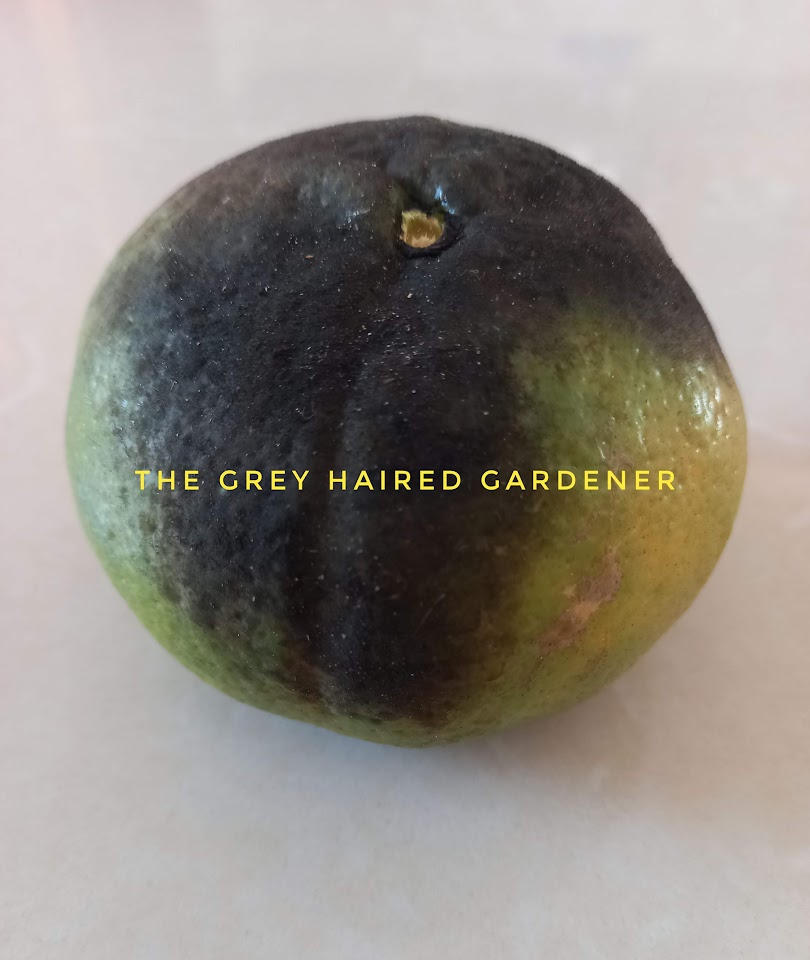
These photos were taken of my mango tree in my backyard. As you can see, it's a nasty case of sooty mold on the leaves and it has spread to the leaves of my adjacent "caimite" or Star Apple ( Chrysophyllum cainito) fruit tree. (Photo Below)
What Causes Sooty Mold?
Sooty mold grows on the sugary substance (honeydew) secreted by sap-sucking insects like aphids, scale, and whiteflies. The mold itself doesn’t infect the plant but can block sunlight, affecting photosynthesis and overall plant health.
How to Treat Sooty Mold
The key to eliminating sooty mold is controlling the pests that cause it. Here’s how:
1. Remove the Insects
- Manual Removal: For small infestations, wash insects off with a strong jet of water or wipe affected areas with a damp cloth.
- Insecticidal Soap: This is applicable for small of large infestations and is a safer option that helps control aphids and scale insects. Apply in the early morning or late evening to avoid harming beneficial insects.
- Neem Oil: Effective but should be used cautiously as it can affect pollinators and beneficial insects. Apply in calm weather, following the lowest recommended dose. Larger infestations may require a higher dosage.
2. Biological Control
- Encourage natural predators like ladybugs, lacewings, or parasitic wasps to help keep pest populations in check. This means zero or no chemical applications.
- This method is ideal for large trees or hard-to-reach areas, where spraying may not be practical.
3. Cleaning the Mold
Once the pests are gone, the mold will stop spreading and gradually disappear. For small infestations, you can speed up the process by wiping leaves with a mild soapy water solution or spraying them with a mix of water and a small amount of dish soap. However, this method is not practical for larger affected areas or tall trees.
The Bottom Line
If you want to get rid of sooty mold, start by getting rid of the insects. Once the pests are under control, the mold won’t have a food source and will gradually fade away and no more unsightly black coatings!
Happy Gardening!
The Grey Haired Gardener





.jpg)


No comments:
Post a Comment